If you’ve ever asked about pruning a tree and been hit with terms like crown reduction, thinning, pollarding or topping, you’re not alone. These are common methods of managing tree size and shape — but they’re very different in outcome and long-term impact.
In this post, we’ll explain the differences, highlight the pros and cons, and share why, at Woodfelder Tree Care, we always advise against “topping”.
Crown Reduction: A Targeted, Expert Approach
Crown reduction is the most common and professionally recommended method of reducing a tree’s size while preserving its health and structure.
It involves selectively cutting back the outer branches, reducing the height and spread of the canopy without taking off more than necessary. Done correctly, the tree maintains its natural shape and can continue to grow and thrive safely.
✅ Ideal for large trees near buildings, roads, or utilities
✅ Reduces shade, wind resistance and weight
✅ Helps prevent storm damage or future structural issues
✅ Keeps the tree balanced, natural-looking and healthy
If you’re looking for a crown reduction in Manchester, we’ll carry out a clean, sympathetic prune in line with British Standards (BS3998) — no guesswork or gutting involved.
Crown Thinning: Subtle But Effective
While crown reduction shortens a tree’s overall size, crown thinning is all about improving airflow and light within the canopy — without altering its height or shape.
We do this by selectively removing smaller internal branches, particularly where growth is congested or crossing. It’s a light-touch technique that keeps the tree’s structure intact while making it less dense.
✅ Increases light levels below the tree — great for gardens and planting
✅ Reduces wind resistance, lowering the risk of storm damage
✅ Helps reduce leaf litter and debris in gutters, paths or outdoor spaces
✅ Keeps the tree looking natural and healthy with minimal impact
Crown thinning is especially useful for mature trees in urban gardens, car parks or public spaces, where airflow and visibility matter but you don’t want to lose the shape or screening the tree provides.
Pollarding: Controlled but High-Maintenance
Pollarding is a more drastic technique that involves removing all new growth back to a defined framework of main branches, often repeated on a cycle every 1–3 years.
This is usually done when the tree is still young or when an older tree has already been previously pollarded.
✅ Keeps trees small in tight urban spaces
✅ Good for species that tolerate hard pruning (like Lime or Willow)
✅ Encourages fresh, fast new growth
⚠️ Requires regular re-pruning once started
⚠️ Not suitable for all species or all sites
⚠️ Can look stark or unnatural if not maintained properly
Pollarding can be the right choice for street trees, business frontages or housing association sites where space and visibility are key — but it’s a commitment. Once you start, you’ll need to stick with it.
Topping: What It Is — and Why You Should Avoid It
Topping is the unskilled removal of the upper portion of a tree — often done to reduce height quickly or make a tree “safer”. In reality, it usually does the opposite.
⚠️ The tree responds by producing fast, weak, poorly attached regrowth
⚠️ The cut surfaces don’t heal well, leading to decay and disease
⚠️ The tree loses its shape and structure
⚠️ Long-term costs go up — topped trees often need repeated work or full removal later
Topping is often done by uninsured or unqualified operators, and while it may look like a cheap, quick fix, it causes real damage.
At Woodfelder, we never top trees — and we’ll always explain safer, more sustainable alternatives.
What to Ask Your Tree Surgeon
Before you book any tree work — whether you’re a homeowner or managing a school, estate, or public space — here are a few questions to ask:
Are you qualified and insured?
Will the work follow BS3998 standards?
Will the tree recover and regrow in a healthy shape?
Do I need to inform the council (TPO or conservation area)?
A good tree surgeon will have clear answers — and won’t suggest topping.
Looking for Expert Tree Pruning in Manchester?
At Woodfelder Tree Care, we carry out crown reductions, pollards and pruning across Manchester and Stockport with care, precision, and a long-term view. Whether it’s a back garden, a school playground, or a listed property, we’ll recommend the best solution for your tree and your space.
📞 Get in touch for honest advice, expert tree services in Manchester, and quotes you can trust.
